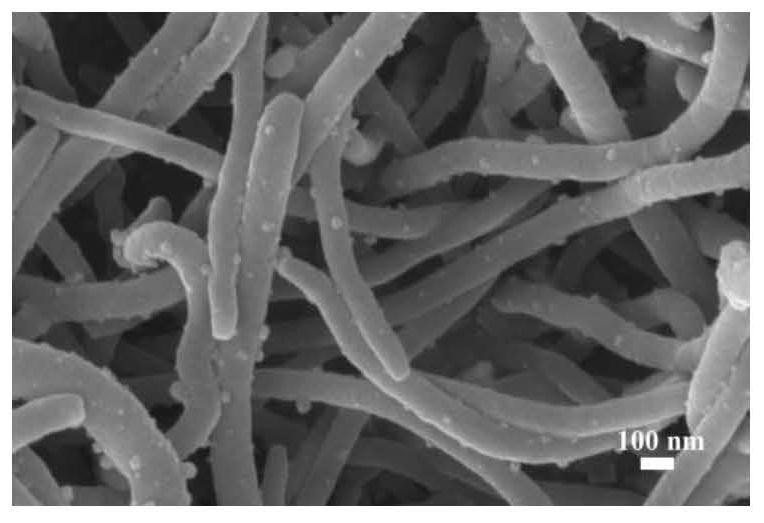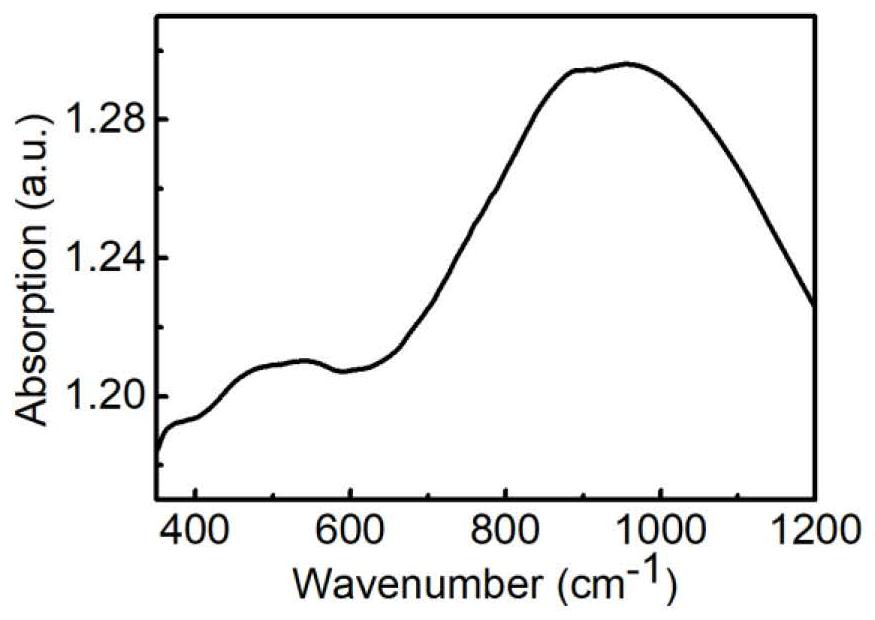Conductive polymer biosensor electrode material and preparation method and application thereof
A biosensor and conductive polymer technology, applied in the field of conductive polymer biosensor electrode materials and its preparation, can solve the problems of increasing catalytic sites, long preparation process, side reactions of metal transition accumulation, etc., to achieve increased catalytic sites , easy to achieve mass production, short time-consuming effect
- Summary
- Abstract
- Description
- Claims
- Application Information
AI Technical Summary
Problems solved by technology
Method used
Image
Examples
Embodiment 1
[0046] A preparation method of conductive polymer biosensor electrode material, comprising the following steps:
[0047](1) Pretreatment of biomedical titanium sheets: use sandpaper to polish biomedical titanium sheets (diameter 10 mm) to remove the surface oxide layer, and clean the titanium sheets with deionized water, 99.7% absolute ethanol and 99.5% acetone for 10 minutes each , dry for later use;
[0048] (2) Preparation of the PPy nucleation layer: use Zahner electrochemical workstation in Germany, select the three-electrode mode, take the saturated calomel electrode (SCE) as the reference electrode, the copper sheet as the counter electrode, and the biomedical titanium sheet with a diameter of 10 mm as the The working electrode, together with the aqueous solution containing 0.25mol / L hydrochloric acid and 0.2mol / L pyrrole as the electrolyte, constitutes a small electrochemical cell. Using the chronocurrent constant voltage method, react with a voltage of 0.8V (vs SCE) ...
Embodiment 2
[0053] A preparation method of conductive polymer biosensor electrode material, comprising the following steps:
[0054] (1) Pretreatment of biomedical titanium sheets: use sandpaper to polish biomedical titanium sheets (diameter 10 mm) to remove the surface oxide layer, and clean the titanium sheets with deionized water, 99.7% absolute ethanol and 99.5% acetone for 10 minutes each , dry for later use;
[0055] (2) Preparation of the PPy nucleation layer: use Zahner electrochemical workstation in Germany, select the three-electrode mode, take the saturated calomel electrode (SCE) as the reference electrode, the copper sheet as the counter electrode, and the biomedical titanium sheet with a diameter of 10 mm as the The working electrode, together with the aqueous solution containing 0.25mol / L hydrochloric acid and 0.2mol / L pyrrole as the electrolyte, constitutes a small electrochemical cell. Using the chronocurrent constant voltage method, react with a voltage of 0.8V (vs SCE)...
Embodiment 3
[0061] A preparation method of conductive polymer biosensor electrode material, comprising the following steps:
[0062] (1) Pretreatment of biomedical titanium sheets: use sandpaper to polish biomedical titanium sheets (diameter 10 mm) to remove the surface oxide layer, and clean the titanium sheets with deionized water, 99.7% absolute ethanol and 99.5% acetone for 10 minutes each , dry for later use;
[0063] (2) Preparation of the PPy nucleation layer: use Zahner electrochemical workstation in Germany, select the three-electrode mode, take the saturated calomel electrode (SCE) as the reference electrode, the copper sheet as the counter electrode, and the biomedical titanium sheet with a diameter of 10 mm as the The working electrode, together with the aqueous solution containing 0.25mol / L hydrochloric acid and 0.2mol / L pyrrole as the electrolyte, constitutes a small electrochemical cell. Using the chronocurrent constant voltage method, react with a voltage of 0.8V (vs SCE)...
PUM
| Property | Measurement | Unit |
|---|---|---|
| Diameter | aaaaa | aaaaa |
Abstract
Description
Claims
Application Information
 Login to View More
Login to View More - R&D
- Intellectual Property
- Life Sciences
- Materials
- Tech Scout
- Unparalleled Data Quality
- Higher Quality Content
- 60% Fewer Hallucinations
Browse by: Latest US Patents, China's latest patents, Technical Efficacy Thesaurus, Application Domain, Technology Topic, Popular Technical Reports.
© 2025 PatSnap. All rights reserved.Legal|Privacy policy|Modern Slavery Act Transparency Statement|Sitemap|About US| Contact US: help@patsnap.com



